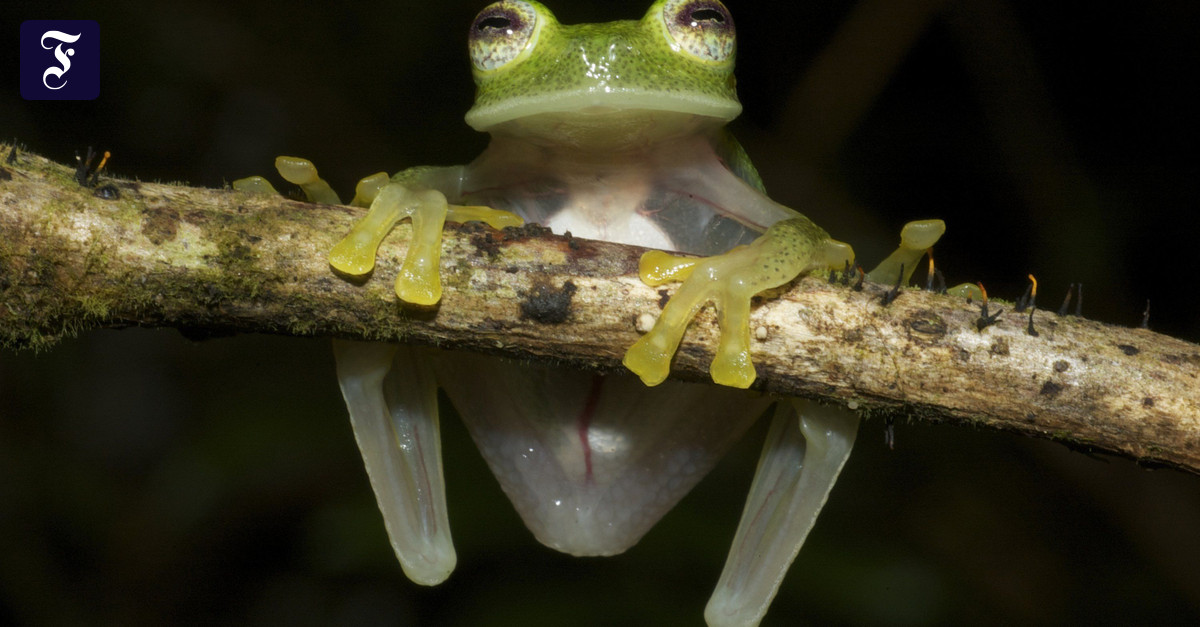As a green, brightly colored frog, you should feel reasonably safe among all the shimmering green of the Central American rainforests.
In terms of color, camouflage is already very good in the upper forest levels.
The color matching does not make it easy for the many predators – snakes, lizards, birds, four-legged friends and also roaming insects – to unmask the appropriately colored tree frogs in the foliage.
But nothing that couldn't be made even better.
The glass frogs, for example, like to climb, are quite perfectionistic when it comes to camouflage.
They even trick the light on the upper floors in the branches.
They make themselves almost invisible.
While other frog journeymen manage during the day, thanks to their pigmentation, to be difficult to spot in the light from above,
however, her body, sitting on the sheet, casts a hard shadow that gives her away.
With the glass frog it is completely different.
Thanks to two special camouflage techniques, he manages to cast only minimal shadows.
The first - special skins in which its organs are embedded and coated with highly reflective guanine crystals - has long been known.
The other, almost more astonishing camouflage technique has now been presented by American biologists from Duke University and the American Museum of Natural History in the journal Science.
in which its organs are embedded and covered with highly reflective guanine crystals - has long been known.
The other, almost more astonishing camouflage technique has now been presented by American biologists from Duke University and the American Museum of Natural History in the journal Science.
in which its organs are embedded and covered with highly reflective guanine crystals - has long been known.
The other, almost more astonishing camouflage technique has now been presented by American biologists from Duke University and the American Museum of Natural History in the journal Science.
Joachim Müller-Jung
Editor in the feuilleton, responsible for the "Nature and Science" department.
Follow I follow
They optically measured a dozen glass frogs of the species
Hyalinobatrachium fleischmanni
(Fleischmann's glass frog) in various phases of sleep and activity.
Namely animals that are alive and as stress-free as possible.
Because as soon as the animals move or get stressed, the transparency is lost.
Using high-resolution photoacoustic microscopes, the researchers were able to systematically capture part of the light absorbed by frog tissue, which is converted into weak ultrasonic waves.
The metabolism also shuts down to the maximum
This made it possible to measure the transparency for light down to the deeper tissue.
And it turned out that the glass frogs even ensure that their blood can become almost invisible in the richly branched vascular network.
Hardly any red blood cells circulate in the body during their daytime sleep on the leaves.
Instead, 82 to 93 percent of blood cells are temporarily stored in the liver, which is protected by a guanine sheath.
The transparency of the body can thus be increased two to three times within a few seconds of falling asleep.
The oxygen saturation of the hemoglobin is then in the low single digits.
It is very likely that the animals also shut down their metabolism to the maximum during sleep.
As soon as night falls and the glass frogs become active, the oxygen-laden blood cells flow through the veins as normal again.
The volume of their liver can increase by up to forty percent because of the blood cell concentration - a phenomenon that the biologists could not find in closely related tree frogs.
This also makes the glass frogs interesting for medical research.
Because how the amphibians manage to enrich the vessels in the liver with blood cells to such a high level without the cells clumping together and thus interrupting the blood flow remains a great mystery.

